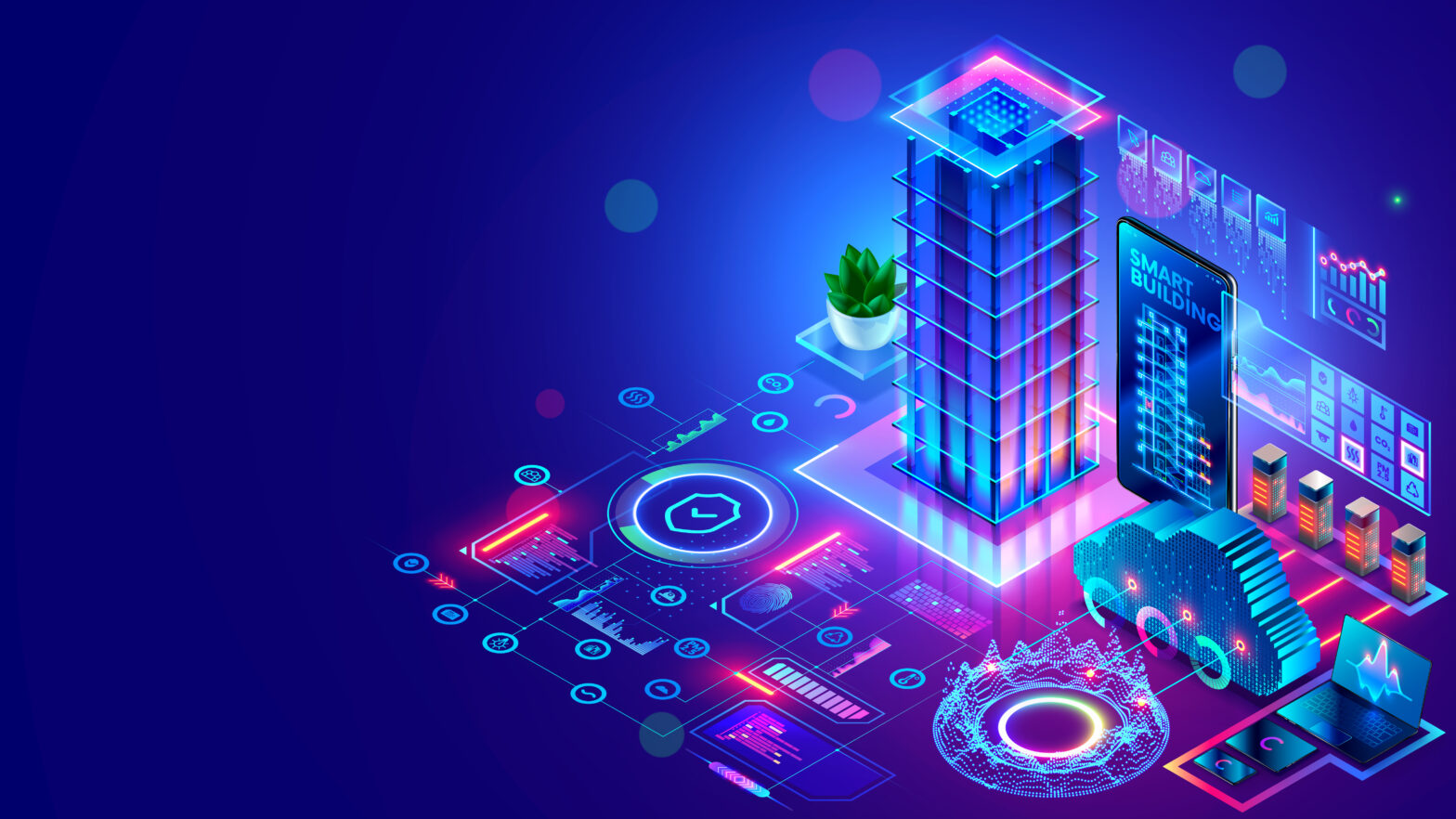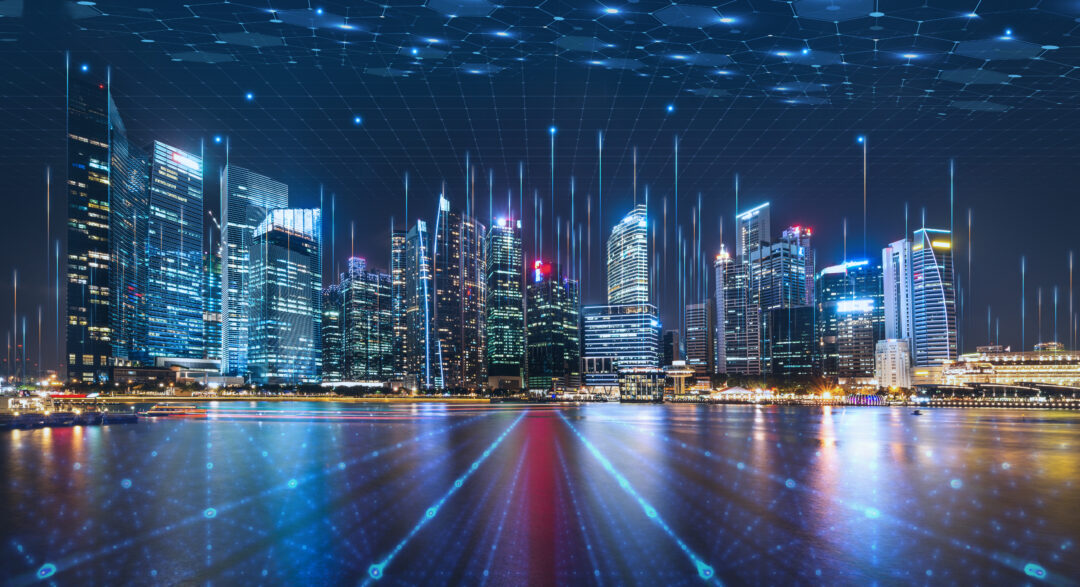When you picture a “city of the future” what comes to mind? While the world may not be quite ready for a reality like that of the Jetsons, the vision of drones buzzing overhead to deliver packages or buildings and roads made of self-healing concrete may not be too far off.
Today, techies, entrepreneurs, and politicians are busy creating the cities of tomorrow and depending on artificial intelligence (AI) and machine learning (ML) to help make everyday life safer and more efficient. If so, IT professionals will be more critical than ever, functioning as the network to manage everything electronic and digital.
>Read more on Why businesses and society need smart cities
So, what’s next and how do we actually get there? Here are some examples of how IT professionals will make an impact as smart cities continue to develop.
A new super-information highway
Roadways are vital to the efficiency of everyday life and act as the initial focus of many smart city initiatives. Picture flying down the highway at 65 miles per hour, and just as you are about to switch lanes, an alert comes through your stereo, and the lane markers blink to alert you of danger, like a crash or slowed vehicle ahead. This may seem like science fiction, but this is just one function our future roads will hold. With 95% of vehicle accidents resulting from driver error, this immediate receipt of information, from road to vehicle, will greatly reduce the number of accidents and build a safer transportation network for citizens.
>Read more on how the private sector can advance smart cities
Intelligent street lights are also being integrated into cities to increase safety. Currently, Los Angeles is utilising sodium-vapor street lamps equipped with a moonlight-hued matrix of light-emitting diodes that ultimately create a brighter look. To meet “smart” status, the lights connect back to the city’s Bureau of Street Lighting with information about whether they’re on, off, or broken. Up next, these street lights will utilise AI to increase brightness after large sporting events and blink to alert drivers of a road hazard or oncoming emergency vehicles.
Roads, including what is on and around them, are evolving as well. This is because the people behind the scenes are developing advanced machine learning technology, turning roads into actual super information highways with components like sensors and wifi capabilities.
>See also: Smart city conferences in 2018
Smart cities can be the “greenest” of all
As urbanisation continues to swell, it’s important to note that more than 7% of the world’s CO2 emissions can be attributed to concrete production, but the innovators dreaming these smart cities into a reality have developed a unique solution. Self-healing concrete has the ability to increase the life of these structures, which removes the need for repairs and reduces the lifetime cost by up to 50%. By extending the life of concrete, gas emissions significantly decrease.
>Read more on how electric vehicles open new avenues for smart cities
Power is another environmental hot topic innovators are moving to address for the city of the future. Many are searching for alternate ways to provide energy in homes and businesses.
One example is Austin Shines, a project launched in Austin, Texas as an experiment to test software-integrated solar panels that offer homeowners and businesses the ability to switch between panel and sun-charged power. This hybrid approach delivers a new way to power infrastructure, paying close attention to both financial and environmental cost.
To keep these systems on track, IT professionals will use AI and ML to manage the data and activities, allowing for detection of anomalies and faster restoration of services when things go down.
>Read more on how business can go green
Finding the connection with the world around you
“Alexa make my coffee.” Isn’t it crazy that this is now an option? As IoT continues to find its place in our homes, connectivity has become a much larger force in everyone’s life.
Manufacturing, transportation, utilities, and logistics will lead IoT spending by 2020, averaging $40 billion each. Smart cities will account for 26% of this spending, as general city management will be IoT’s largest use. The ability to integrate numerous functions and control systems with one device will not only increase efficiency but also enhance the importance of IT. Without IT professionals already managing complex AI and ML technologies, this surge in data could quickly become overwhelming.
>Read more on unlocking the potential of the IoT for smart cities
Many innovators believe that IoT is the key to advancing our cities. John Wechsler, Founder and CEO of the Indiana IoT Lab is one such innovator. In a recent conversation with him, John had this to say: “With smart city initiatives and IoT, a perfect storm is brewing that can create an opportunity for anyone in the world to dream up some solution that really could change the world for the rest of us. A perfect example of this, and one of the coolest startups I’ve seen is about firefighter safety and the ability for IoT and emergency professionals to know what’s going on in a building during a public safety emergency.”
The superheroes of tomorrow
Builders of the city of the future may not look like superheroes, but their work will leave behind a legacy. IT professionals will play one of the most important roles in our future, as they create smarter roads, develop environmentally sound cities, and provide better connections with the surrounding world. All of these innovations will ultimately ensure that things run smoothly, people are safe, and encourage future generations to build communities that are even more intelligent than the ones we are envisioning today.
Sourced by Phil Tee, CEO of Moogsoft
Nominations are now open for the Women in IT Awards Ireland and Women in IT Awards Silicon Valley. Nominate yourself, a colleague or someone in your network now! The Women in IT Awards Series – organised by Information Age – aims to tackle this issue and redress the gender imbalance, by showcasing the achievements of women in the sector and identifying new role models










